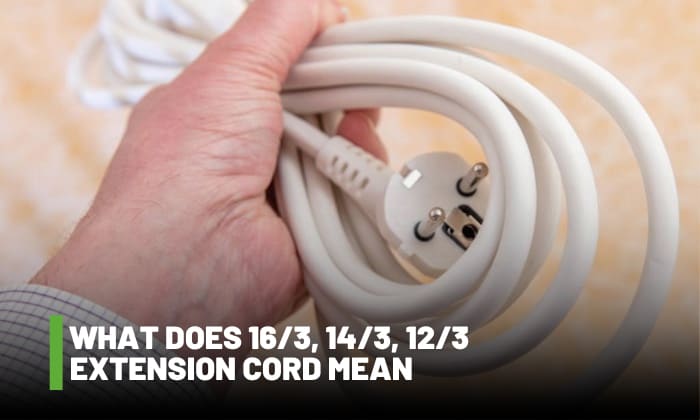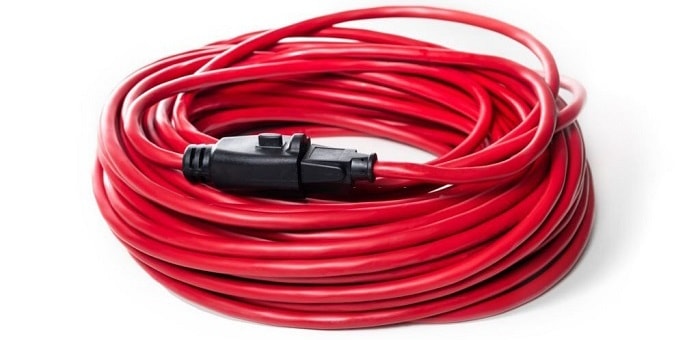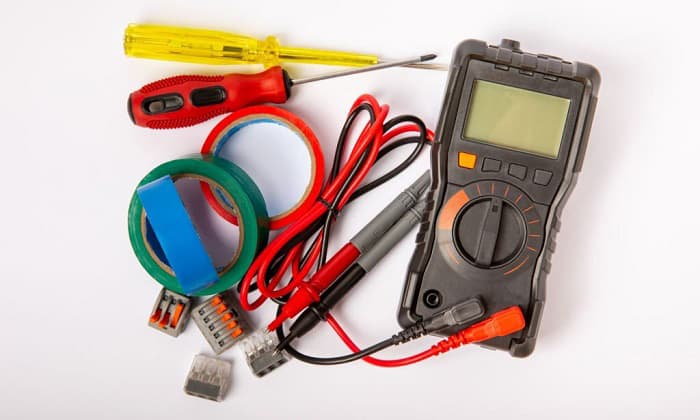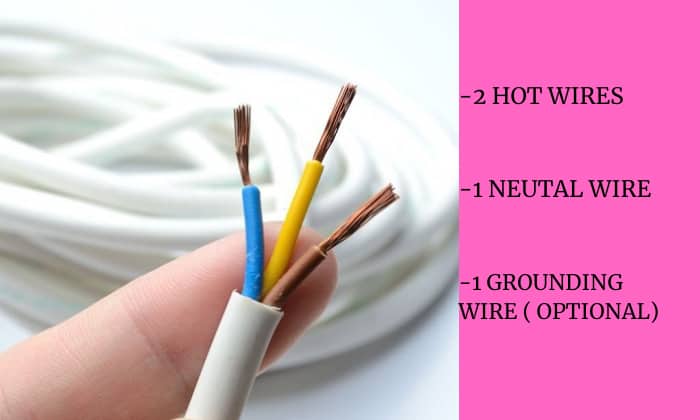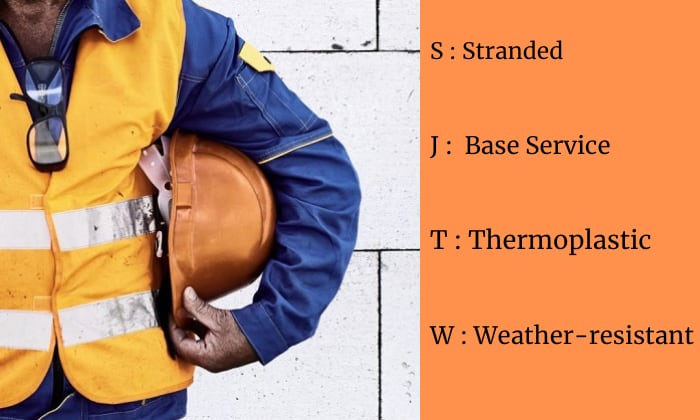While you’re browsing for extension cords online or come across one in your local hardware store, do the thought, “What does 16/3, 14/3, 12/3 extension cord mean?” float into your mind?
It’s not at all technical. The left figure reflects the wire gauge, while the right one indicates the number of conductive wires.
The gauge tells you how thick the cord is. The lower the number, the thicker it is, so 12/3 is thicker than 16/3 and, thus, heavier duty and has a higher amp rating.
Of course, that means there are 3 wires in the cord.
Table of Contents
Clearing Up What The Numbers and Letters Mean
People ask me every once in a while, what does a 16/3 extension cord mean? My immediate instinct is to teach them the difference between a wire and a cord.
To say it’s “16-3 wire” will only add to the confusion since a wire is just one part of an entire cord. As basic electrical engineering teaches us, a wire serves as the conductor that transports power where it’s needed.
Yes, a cord contains wires, but it also includes the insulation and the covering. So, it’s more appropriate to use the terms 16/3 cable or 16 3 power cord, but never just a “wire”.
Wire Gauge And Its Purposes
Now, on to the gauges and their significance. And, yes, they’re highly important because they are essentially used to tell you the amount of power load that the cord can handle.
- For example, in a 16/3 vs 12/3 matchup, you’ll be more inclined to choose the latter if you need to feed “hungry” contraptions and appliances because it can handle from 20 amps up to 25 amps. 16/3 limits itself to half that at 10 amps.
- Even in a 16/3 vs 14/3 extension cord battle, the former still loses, at least if capacity is the sole criterion. 14/3 can manage up to 15 amps.
- What if we pit the 12/3 vs 14/3 extension cord? Well, again, if we’re only looking at the amp rating, then 12/3 is the clear winner again, especially if you need to feed appliances with lofty amperage.
Take note that these amp ratings assume that the runs are less than 50’.
Once you reach, let’s say, 100 feet in a 14 gauge cord, the load the cord can handle may dip to as low as 11 amps. That’s why it’s standard practice to adjust by upgrading it to the next larger size, which is 12 gauge in this case.
Remember this: Wire gauge is but one factor that determines the final amp rating of a wire. The heat generated by the wire and how much heat the insulation can handle are just as important, along with the ambient temperature, as reflected in the NEC’s wire gauge charts.
Obviously, it’s also essential to underscore the importance of aligning the wire gauge’s amp rating with the intended load you’ll be putting on the extension cord.
- A wi-fi router pulls less than 1 amp and can be safely plugged into a 16/3 cord. You can even plug in other low-power appliances like a laptop or phone charger in the same extension cord without fear of overloading it.
- A hairdryer is a different story, though, as some products can pull up to 16 amps. I won’t settle for anything less than 12 gauge for that, and I’d keep the running length as short as possible (no more than 25 feet).
- But what if you’re planning to use a 12/3 extension cord 100 ft and above on a freezer in your garage? These setups are undoubtedly sketchy because, for one, it’s actually not recommended by the NEC to use an extension cord permanently due to safety issues.
Voltage drop and resistance also enter the picture, especially if you go past 100 feet. You may need a 10 gauge cord that handles 30 amps well instead.
Number of Wires
These are pretty self-explanatory but no less important to discuss in greater length. For instance, you may ask, “But what exactly are the 3 wires in a 12/3 cord?”
Does it mean there’s 1 hot wire, 1 neutral wire, and 1 grounding wire? Technically, no.
Rather, it means there are 2 hot wires, 1 neutral wire and typically a grounding wire as well. In short, there are 3 conductive wires in the cable, and the non-conductive one is not included here.
Similarly, just because you’re using 12/2 cords doesn’t mean they don’t have a ground wire. It just isn’t included in the count and can be uninsulated in some cords.
Just stick to the notion that they reflect the number of conductors, and you’ll be good every time.
For the regular consumer, it’s better to just pay attention to the wire gauge and make sure you match it with the suitable load.
What About The Letter Combinations on the Jackets?
We’ve talked about numbers for far too long. Let’s turn our attention to the combination of letters instead.
For instance, what does 12/3 SJTW mean? Well, you normally see them add those because they immediately reveal the key properties of the cord and its covering.
S means it’s stranded, while J indicates that it’s junior service or limited to 300 volts. T and W mean thermoplastic and weather-resistant, respectively, which relates more to the cord’s overall sturdiness.
You should also go beyond just knowing the SJTW extension cord meaning since there are multiple other variations available. Here’s a good resource to read if you want to know all the possible combinations.
Conclusion
Reiterating all the points I made above regarding the question, “What does 16/3, 14/3, 12/3 extension cord mean?”, these numbers tell you the wire gauge and number of conductors.
Both are equally vital in determining the current-carrying capacity of the extension cord and its suitability for any kind of electrical load you use with it. However, knowing just the gauge is enough for most casual applications. Always check it and ask an electrician if you’re having doubts.

I am Edwin Jones, in charge of designing content for Galvinpower. I aspire to use my experiences in marketing to create reliable and necessary information to help our readers. It has been fun to work with Andrew and apply his incredible knowledge to our content.

